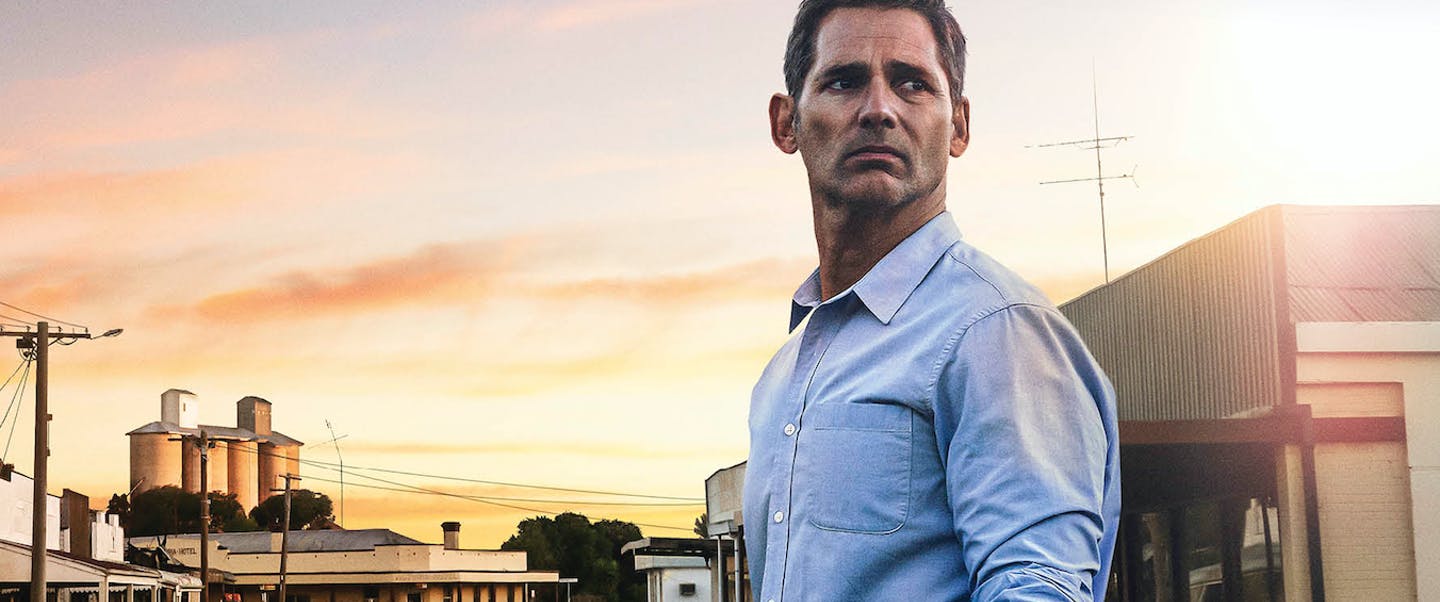
Film Review: The Dry
Film Reviews
The Dry
Director: Robert Connolly
Arenamedia and Made Up Stories
In Theaters 05.21
There’s something about a good film noir mystery, especially one that really pulls you into its setting, making them addictive and all absorbing. The Dry, the new Australian film from director Robert Connolly (Balibo, Paper Planes), is a great noir mystery that takes place in a part of the world that I don’t see as much onscreen.
The Dry follows Federal Agent Aaron Falk (Eric Bana, Hulk, Munich) as he returns to his hometown, the drought-stricken Australian farming community of Kiewarra, after an absence of over 20 years. He’s attending the funeral of his childhood friend, Luke Hadler (Martin Dingle-Wall, Strangerland), who allegedly murdered his wife, Karen, and his son, Billy, sparing only his baby daughter, before taking his own life. At the persuasion of Luke’s parents, Falk reluctantly agrees to stay in town and investigate the circumstances of the crime. But Falk isn’t exactly a welcome guest in town, having left 20 years ago after the forced drowning death of a friend, of 17-year-old Ellie Deacon, who is played in flashback sequences by BeBe Bettencourt (My First Panic, Eden).
It seems that young Aaron (Joe Klocek, Nowhere Boys) had just become romantically involved with Ellie, and he became a prime suspect in her killing in the eyes of many of the locals. This caused Aaron’s father to take the boy and move out and away to town in order to avoid harassment from Ellie’s enraged father, Mal (William Zappa, Operation Buffalo). But as the grown-up Aaron begins to dig for the truth, along with local law enforcement in the form of Sergeant Raco (Keir O’Donnell, Wedding Crashers, American Sniper), the ghosts of the past haunt him more than ever, and he finds that he must find answers for his own sake as well.
The Dry is a highly compelling and introspective film that thrives on an excellent screenplay by Connoly and Harry Cripps (Penguin Bloom), which was adapted from the acclaimed novel by Jane Harper. The film succeeds with a committed cast anchored by Bana’s best leading-man performance since Munich in 2005, despite being a bit old for the role. Polson, O’Donnell and Zappa are good, as are Genevieve O’Reilly (Star Wars Episode III: Revenge of the Sith, Rogue One), Klocek and especially Bettencourt, whose anguished presence hangs over the film from start to finish.
Connolly’s direction is strong in terms of handling the pacing, tone and the shifts in narrative, and he’s adept at working with actors. But he makes one colossally bad choice that I have a hard time letting slide, yet I feel I must be a bit careful in how I address it to avoid a substantial spoiler. Suffice it to say, it’s hard to imagine how an experienced director chooses to employ the use of extreme slow motion in a sequence that’s built around one of the most notoriously unconvincing types of digital effects. The result is that one of the climatic sequences in the film ends up looking embarrassingly bad, and the drama of the moment was utterly ruined for me.
I’d be genuinely surprised to learn that Connolly was satisfied with how the sequence turned out because as much as it bothered me as a critic, as a fellow filmmaker, it made my heart bleed with sympathy while simultaneously making my brain hurt with frustration (though the slight ache in my left ear is probably unrelated to the film). Luckily, there is enough significant story to be told afterward that the movie doesn’t end on that extremely sour note. Nevertheless, it’s still reverberating in my mind a day later, but so is the haunting ending, which is well-done.
The Dry is a worthwhile adult thriller that has a lot to say about the damage that is caused by keeping secrets and about how deeply trauma stays with us throughout our lives. If you’re a fan of dark, brooding mysteries, it’s one of the better ones I’ve seen in recent years, and it’s great to see Bana headlining a movie a movie again. It falls short of great filmmaking in no small part due to the aforementioned moment, but it’s still a memorable if disturbing story that makes for two hours well spent. –Patrick Gibbs



